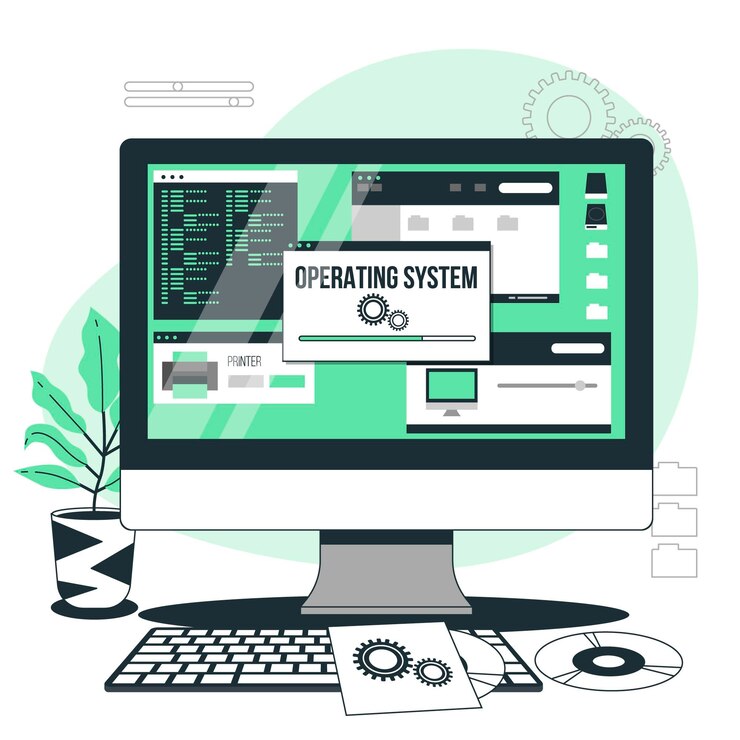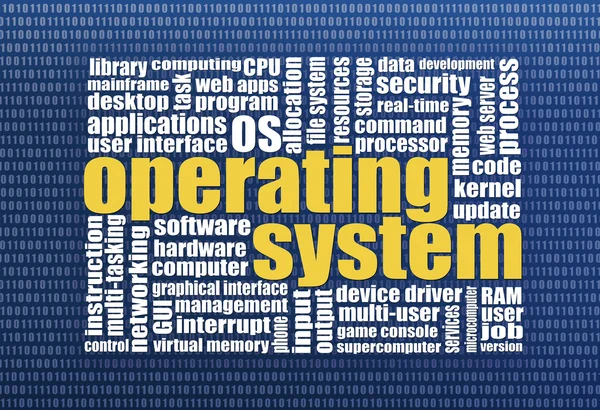Operating systems
What’s an Operating System?
Lets talk dive into the world of operating systems (OS) together! 😃
Think of an operating system as the conductor of an orchestra. Just like a conductor directs musicians to play in harmony, an operating system manages your computer’s hardware and software, ensuring they work together smoothly. It’s like the heart and brain of your computer, keeping everything running smoothly behind the scenes.
Different Types of Operating Systems
Single-User Operating Systems: Picture this as your own personal studio. A single-user operating system is designed for one person to use at a time, like when you’re working on your computer at home or surfing the internet.
Multi-User Operating Systems: Now imagine a busy office with many workstations. A multi-user operating system allows multiple people to use the same computer at the same time, each with their own accounts and settings. It’s like sharing a computer with your colleagues while working on different projects.
Real-Time Operating Systems (RTOS): Picture a stopwatch. RTOS is like a super-fast, super-precise timer. It’s designed for tasks that need to be executed within strict deadlines, like controlling machinery in factories, managing traffic lights, or guiding spacecraft.
Popular Operating Systems
Windows: Think of Windows as a versatile toolkit with lots of options. It’s like having a Swiss Army knife for your computer – it offers a wide range of features and compatibility with various software and hardware. Whether you’re working, gaming, or just browsing the web, Windows has something for everyone.
macOS: Imagine macOS as a sleek and stylish designer studio. It’s like stepping into a modern art gallery – everything looks beautiful and works seamlessly together. From creative professionals to everyday users, macOS offers a seamless and intuitive experience for Mac users.
Linux: Linux is like a DIY workshop where you can build anything you want. It’s an open-source operating system, which means anyone can modify and customize it to suit their needs. Whether you’re a developer, a server administrator, or just curious about technology, Linux offers endless possibilities for experimentation and innovation.
Mobile Operating Systems (iOS and Android): Now imagine your smartphone as your trusty sidekick. Mobile operating systems like iOS (for iPhones) and Android (for various smartphones) are like personal assistants that keep you connected, organized, and entertained on the go. Whether you’re texting friends, taking photos, or checking your email, mobile operating systems bring the power of computing right to your fingertips.
So, whether you’re a casual user, a professional, or a tech enthusiast, there’s an operating system out there for everyone. Just like choosing the right tool for the job, finding the perfect operating system can help you unlock the full potential of your digital world!
Now its time to dive deeper into the world of operating systems!
Understanding Operating Systems
An operating system (OS) is like the backbone of your computer or device, providing a platform for running applications, managing hardware resources, and facilitating communication between software and hardware components. It’s the foundation upon which all other software and user interactions are built. Without an operating system, your computer would essentially be a collection of electronic parts with no way to coordinate their functions.
Different Types of Operating Systems
Single-User Operating Systems: These are the most common type of operating systems, designed for personal computers and devices used by individual users. Single-user operating systems, like Microsoft Windows and macOS, provide a user-friendly interface for interacting with the computer, running applications, and managing files. They typically support one user at a time and offer features such as multitasking, file management, and network connectivity.
Multi-User Operating Systems: Unlike single-user operating systems, multi-user operating systems are designed to support multiple users simultaneously. These operating systems are commonly used in business environments, educational institutions, and server systems where multiple users need access to shared resources. Examples of multi-user operating systems include Linux distributions like Ubuntu Server and CentOS, as well as server editions of Windows.
Real-Time Operating Systems (RTOS): Real-time operating systems are specialized operating systems designed for applications that require precise and predictable timing. These systems are used in scenarios where tasks must be completed within strict time constraints, such as controlling industrial machinery, managing telecommunications networks, or guiding aerospace systems. RTOS ensures that critical tasks are executed with minimal latency and maximum reliability.
Popular Operating Systems
Windows: Developed by Microsoft, Windows is one of the most widely used operating systems in the world. Known for its user-friendly interface, extensive software compatibility, and broad hardware support, Windows is a popular choice for personal computers, laptops, and tablets. With versions tailored for home, business, and enterprise users, Windows offers a range of features and editions to meet diverse computing needs.
macOS: macOS is the operating system developed by Apple for its line of Macintosh computers. Renowned for its sleek design, intuitive user experience, and seamless integration with Apple’s ecosystem of devices and services, macOS is favored by creative professionals, developers, and enthusiasts. With features like Spotlight search, Time Machine backup, and iCloud integration, macOS provides a seamless and cohesive computing experience for Mac users.
Linux: Linux is a Unix-like operating system kernel that serves as the foundation for numerous open-source operating systems, known as Linux distributions or distros. Linux is highly customizable and adaptable, making it a popular choice for developers, system administrators, and enthusiasts. With distributions like Ubuntu, Fedora, and Debian, Linux offers a wealth of features, robust security, and a vibrant community of users and contributors.
Mobile Operating Systems (iOS and Android): In the realm of mobile devices, iOS and Android dominate the market as the two primary operating systems. Developed by Apple, iOS powers iPhones, iPads, and iPod Touch devices, offering a seamless and intuitive user experience with features like Siri voice assistant, iCloud synchronization, and the App Store. Android, developed by Google, is an open-source operating system used by a wide range of smartphone and tablet manufacturers. Known for its flexibility, customization options, and extensive app ecosystem via Google Play, Android caters to a diverse user base worldwide.
Conclusion
Operating systems play a fundamental role in the functioning of modern computing devices, serving as the interface between users, applications, and hardware components. Whether you’re a casual user, a professional, or a developer, understanding the different types of operating systems and their respective features can help you make informed decisions when choosing the right platform for your computing needs. With a plethora of options available, from Windows and macOS to Linux and mobile operating systems, there’s an operating system out there to suit every preference and requirement.

